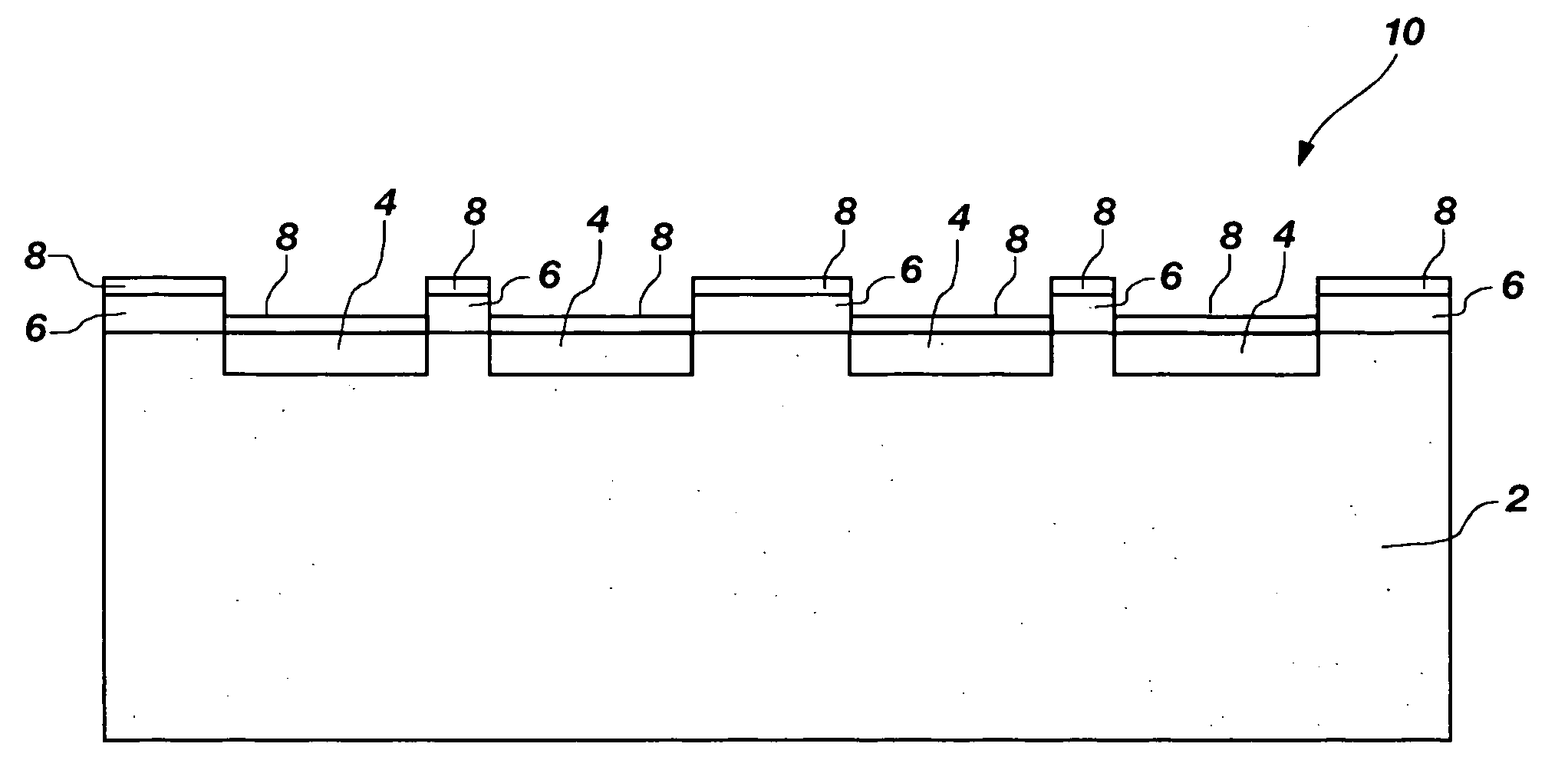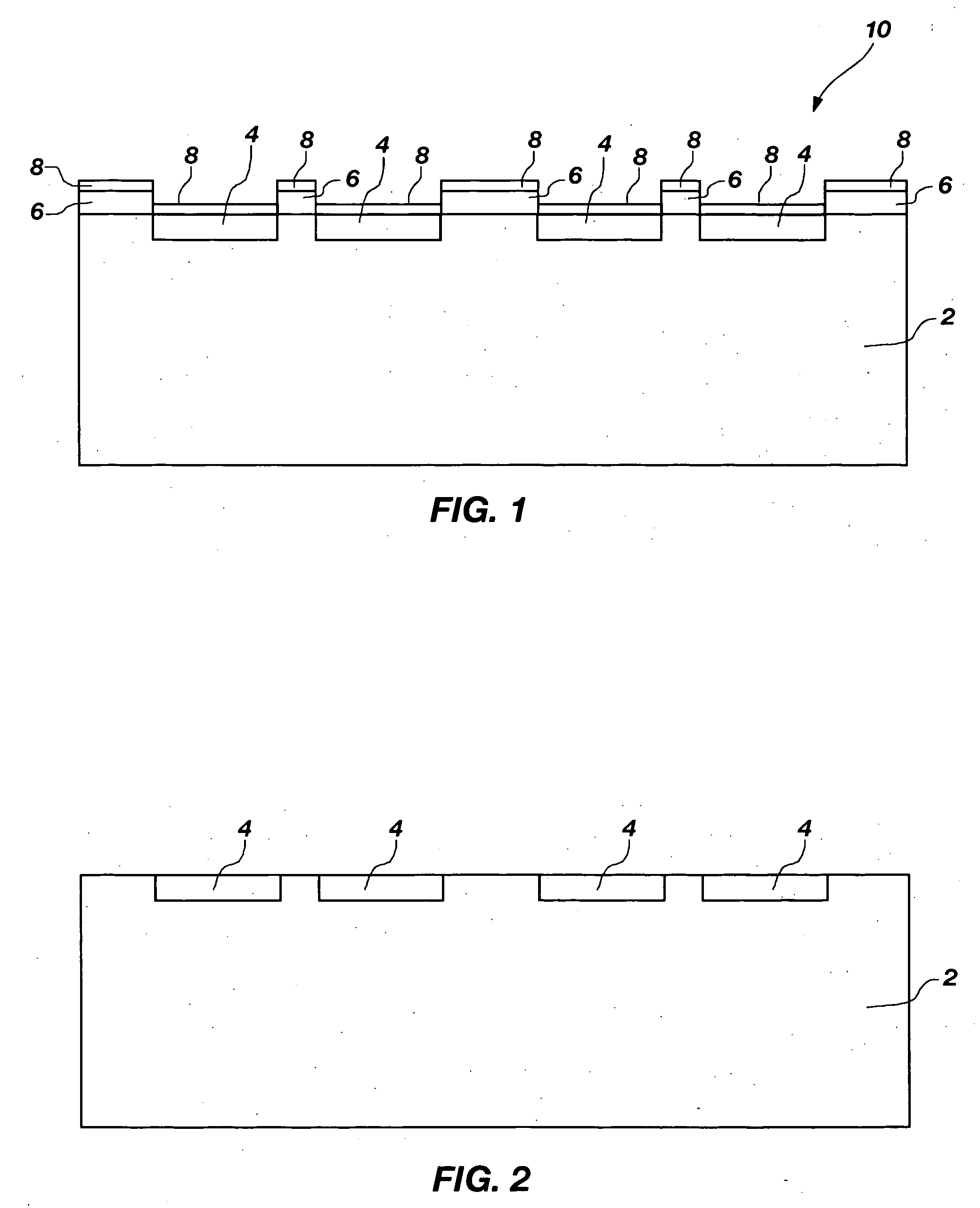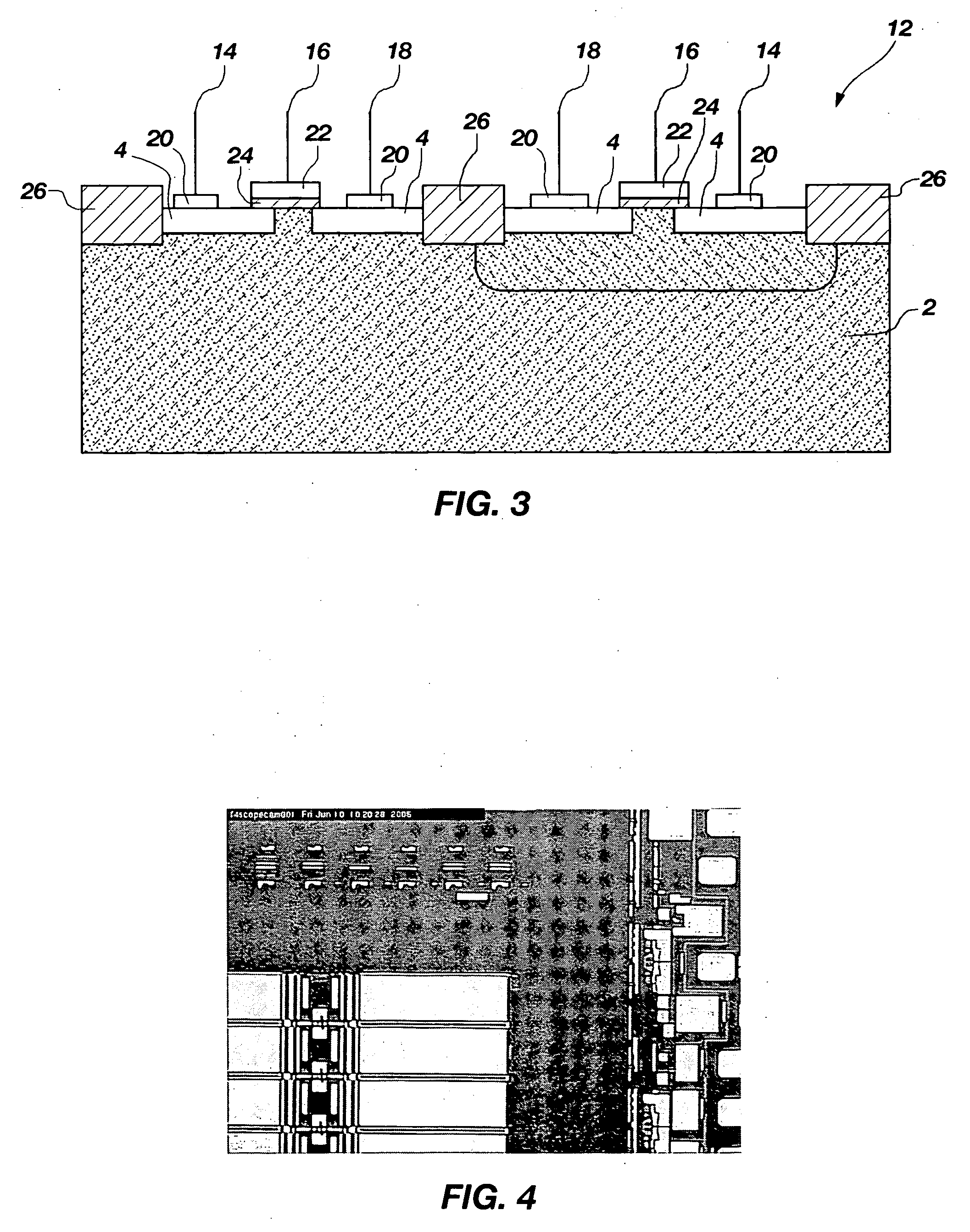Method of photoresist strip for plasma doping process of semiconductor manufacturing
a technology of semiconductor manufacturing and photoresist strip, which is applied in the direction of semiconductor devices, electrical equipment, basic electric elements, etc., can solve the problems of difficult removal of the photoresist layer from the substrate, downstream processing problems, and shallow source/drain junctions
- Summary
- Abstract
- Description
- Claims
- Application Information
AI Technical Summary
Benefits of technology
Problems solved by technology
Method used
Image
Examples
example 1
Water Rinse of Boron-Implanted Semiconductor Wafer
[0040] A semiconductor wafer was implanted with boron by PLAD using 15% B2H6 and 85% H2 at −6 kV, 60 μsec / 5 kHz pulse, a dose of 2×1016 / cm2 dose, a RF power of 725 W, and a pressure of 6 mTorr. The semiconductor wafer was implanted with the boron through a photoresist mask formed from a carbon-based photoresist material. Using SEPR-402, the photoresist pattern on the implanted semiconductor wafer is shown in FIG. 4. The implantation produced a boron-containing layer having approximately 70% boron and approximately 20% oxygen and a thickness of approximately 212 Å on the photoresist layer of the semiconductor wafer. The semiconductor wafer was exposed to a water rinse that included DI water maintained at a temperature that ranged from approximately 55° C. to approximately 65° C. The semiconductor wafer was exposed to the water rinse for approximately 5 minutes. The semiconductor wafer was then dried using conventional surface tension...
example 2
Fluorinated Plasma Treatment of Boron-Implanted Semiconductor Wafer
[0042] A semiconductor wafer was implanted with boron by PLAD using 15% B2H6 and 85% H2 at −6 kV, 60 μsec / 5 kHz pulse, a dose of 2×1016 / cm2, a RF power of 725 W, and a pressure of 6 mTorr. The semiconductor wafer was implanted with boron using a photoresist mask formed from a carbon-based (SEPR-402) photoresist material. The implantation produced a boron-containing layer having approximately 70% boron and approximately 20% oxygen and a thickness of approximately 212 Å on the photoresist layer of the semiconductor wafer. The semiconductor wafer was exposed to a CF4 plasma that also included O2 and a forming gas (3.6% H2 in N2). The CF4 was present at approximately 70 standard cubic centimeters per minute (“scm”), the O2 was present at approximately 2000 sccm, and the forming gas was present at approximately 1500 sccm. The CF4 plasma was generated at a power of approximately 1800 W, a temperature of approximately 180°...
PUM
 Login to View More
Login to View More Abstract
Description
Claims
Application Information
 Login to View More
Login to View More - R&D
- Intellectual Property
- Life Sciences
- Materials
- Tech Scout
- Unparalleled Data Quality
- Higher Quality Content
- 60% Fewer Hallucinations
Browse by: Latest US Patents, China's latest patents, Technical Efficacy Thesaurus, Application Domain, Technology Topic, Popular Technical Reports.
© 2025 PatSnap. All rights reserved.Legal|Privacy policy|Modern Slavery Act Transparency Statement|Sitemap|About US| Contact US: help@patsnap.com



